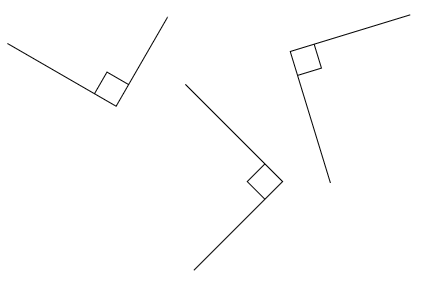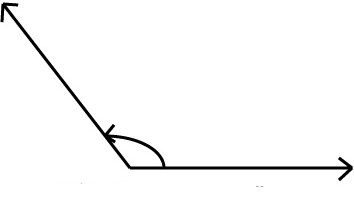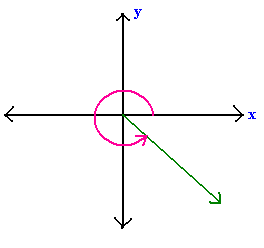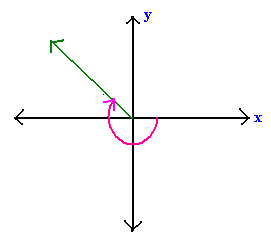Section 1.1 Different Types Of Angles
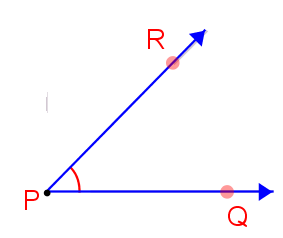
About This Quiz
Explore the Section 1.1 Different Types of Angles quiz, designed to classify various angles as acute, right, obtuse, positive, or negative. This quiz enhances understanding of angle types, crucial for geometry learners, fostering critical thinking and precision in identifying angle characteristics.
Quiz Preview
- 2.
Classify this angle as either a(n) acute angle, right angle, or obtuse angle.
Explanation
A right angle is formed when two lines or sides intersect to form a 90-degree angle. In this case, the given angle is classified as a right angle because it measures exactly 90 degrees. This means that the angle is perpendicular and forms a perfect L shape.Rate this question:
- 3.
Classify this angle as either a(n) acute angle, right angle, or obtuse angle.
Explanation
The given angle is classified as an obtuse angle because an obtuse angle is an angle that measures greater than 90 degrees but less than 180 degrees.Rate this question:
- 4.
What kind of angle is this?
-
Positive angle
-
Negative angle
-
Line
Correct Answer
A. Positive angleExplanation
A positive angle is an angle that is measured counterclockwise from the initial side to the terminal side. In this case, since the question is asking about "what kind of angle" it is, and the answer is "Positive angle," it suggests that the angle being referred to is measured in a counterclockwise direction.Rate this question:
-
- 5.
What kind of angle is this?
-
Positive angle
-
Negative angle
-
Line
Correct Answer
A. Negative angleExplanation
A negative angle is an angle that is measured in the clockwise direction from the positive x-axis. It is called a negative angle because it represents a rotation in the opposite direction of the positive angles, which are measured counterclockwise.Rate this question:
-
Quiz Review Timeline (Updated): Mar 19, 2023 +
Our quizzes are rigorously reviewed, monitored and continuously updated by our expert board to maintain accuracy, relevance, and timeliness.
-
Current Version
-
Mar 19, 2023Quiz Edited by
ProProfs Editorial Team -
Mar 20, 2011Quiz Created by
TAG614
Quiz: How Well Do You Know Inscribed Angles?
Welcome to the intriguing world of inscribed angles within circles! Prepare to embark on a journey of geometric discovery with the "How Well Do You Know Inscribed...
Questions:
10 |
Attempts:
288 |
Last updated:
Aug 20, 2023
|
Quiz: How Well Do You Know The Perimeters And Areas Of Similar Figures?
Dive into the captivating world of geometry with our quiz titled "How Well Do You Know the Perimeters and Areas of Similar Figures?" This engaging quiz is your...
Questions:
15 |
Attempts:
405 |
Last updated:
Dec 11, 2024
|
Test Your Knowledge Of Scale Drawing!
Welcome to the "Test Your Knowledge of Scale Drawing!" quiz! This quiz will assess your understanding of scale drawing concepts, its applications, and the mathematical...
Questions:
10 |
Attempts:
470 |
Last updated:
Nov 16, 2023
|
A Basic Maths Quiz About Shapes And Numbers!
In Mathematics, Geometric shapes are the figures which demonstrate the shape of the objects we see in our everyday life. In geometry, shapes are the forms of objects which...
Questions:
17 |
Attempts:
514 |
Last updated:
Apr 03, 2025
|
Quadrilateral And Its Types Quiz
A quadrilateral is a polygon that has exactly four sides. Here is an informative quiz about Quadrilaterals, that will help in the betterment of your geometric...
Questions:
10 |
Attempts:
3599 |
Last updated:
Jan 06, 2025
|
Straight Lines Quiz: Geometry Test!
The notion of line or straight line is to represent straight objects in geometry. Lines are an idealization of such objects, often described in terms of two points. Take this quiz...
Questions:
16 |
Attempts:
1938 |
Last updated:
Jul 24, 2024
|
 Back to top
Back to top



